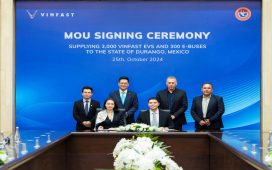As a 3D artist, you’re likely aware of how time-consuming and resource-demanding the rendering process can be. This is where a render farm proves invaluable. A render farm is essentially a network of computers dedicated solely to rendering visual effects and 3D animations.
With render farms, artists can transform simple sketches into realistic images that incorporate shadows, textures, lighting, and intricate details. By distributing rendering tasks across hundreds of machines, rendering times are drastically reduced, making adjustments, edits, and the entire production process faster and more efficient.
In this article, we’ll explore the advantages and drawbacks of using a render farm for animation projects. Read on to learn more!
What are the advantages of using a render farm

As you can probably guess, a render farm has some obvious advantages.
Faster rendering
The primary advantage is the boost in rendering speed. Rendering alone can take up hours or even days, and during that time, your computer is often tied up, leaving you unable to use it for other tasks. Using a render farm accelerates the rendering process significantly, allowing you to devote more time to animation or design work.
Access to the latest technology
Render farms often use the latest hardware and software updates to stay competitive, which means you get access to cutting-edge technology without the need to constantly upgrade your own equipment. This can improve rendering quality and speed, as high-performance machines can handle more complex scenes and higher resolutions with ease, providing results that might be difficult to achieve on an average workstation.
Ease of Use
You can submit your projects for rendering through an application or online interface at the majority of render farms, if not all of them. This eliminates some of the trouble involved in rendering files, particularly when working locally and transferring data between computers for rendering.
Technical assistance for clients
Render farms often provide 24/7 customer service to assist with any problems or specific questions you might have about rendering times, costs, or other needs.
Enhanced quality control
With faster rendering, you gain more time to focus on design and testing. Rather than working in the dark and hoping everything aligns in the final render, you can conduct multiple test renders, allowing for quality control and experimentation.
Scalability
Render farms are built to be scalable, giving you access to more nodes to match your project’s demands.
Remote rendering
As long as you have an internet connection, you can work from anywhere and access a vast render farm remotely, offering greater flexibility.
What are the disadvantages of using a render farm?
While there are many benefits to render farms, there are also some downsides to consider.
Security
Submitting your project to a render farm means sharing intellectual property. While most render farms will sign an NDA to protect your work, bringing a third party into the process still involves some level of risk.
Software compatibility
Different production teams use various applications and plugins to create renders. This means that a render farm must support the software and plugins you’re using; otherwise, its services won’t be compatible with your project.
Limited customization
Using a render farm means working within the parameters of their setup, which can sometimes limit your customization options. If your project requires specific software configurations, unique plug-ins, or particular hardware requirements, a render farm may not be able to accommodate these fully. This can restrict the creative control and flexibility you might have when rendering locally.
Internet dependence
Render farms rely heavily on stable internet connections for uploading and downloading files. If you have a slower or inconsistent internet connection, large uploads or downloads can take significant time and may even disrupt the workflow. This dependence on connectivity can create delays, particularly for large projects or in areas with limited internet infrastructure.
Cost
Running a render farm is costly, as it requires high-end hardware on a large scale, constant power, and potentially different plugins and software. Software licenses alone can be expensive, even in bulk.
Depending on your rendering needs, setting up one or two dedicated workstations for occasional rendering might save time and money over time. However, as projects grow more complex, a render farm can still be cost-effective. Hardware and maintenance expenses can skyrocket as workstation numbers increase. In most cases, working with a professional render farm remains easier and, in some cases, less costly—unless you’re a large production company with a generous budget.
To conclude
Outsourcing rendering to a render farm can be a fantastic way for animators and designers to save both time and money. Compared to local rendering, render farms often allow you to create higher-quality work faster.
If you’re looking to streamline your rendering, Fox Renderfarm offers dependable, fast cloud rendering solutions that can help you save time and resources. Take advantage of their $25 free render coupon and see how much easier your projects can become!









